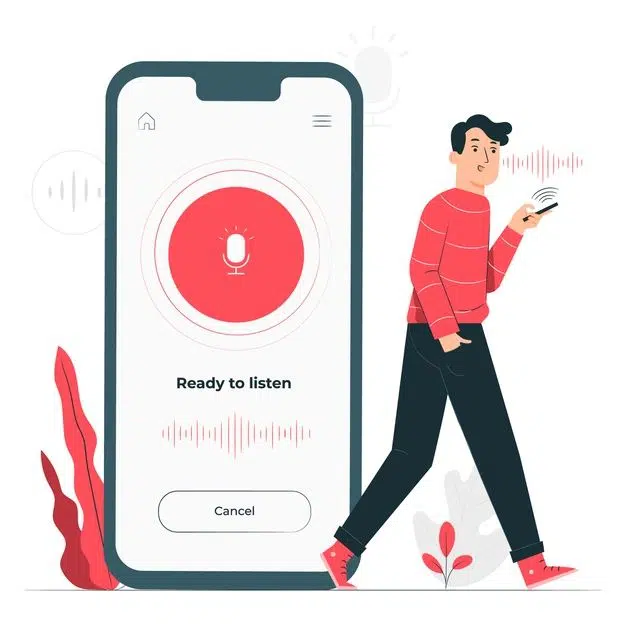The rapid development of digital technologies has reshaped the way we interact with the internet. One of the most transformative advancements in recent years is the rise of voice search. As virtual assistants like Amazon Alexa, Apple’s Siri, Google Assistant, and Microsoft Cortana become increasingly embedded in our daily lives, voice search is poised to redefine the future of Search Engine Optimization (SEO). This article explores how voice search is changing the SEO landscape and what strategies businesses must adopt to stay ahead.
The Rise of Voice Search
Voice search enables users to speak into a device instead of typing their queries into a search bar. It is faster, more convenient, and particularly beneficial for users on the go or those with disabilities. According to Statista, the number of digital voice assistants in use is projected to reach 8.4 billion units by 2024—more than the global population.

The increasing popularity of smart speakers and mobile voice assistants has led to a surge in voice-based interactions. With over 55% of households in the United States projected to own a smart speaker by 2025, the significance of voice search cannot be underestimated.
How Voice Search Differs from Text Search
Understanding the fundamental differences between voice and text search is key to optimizing content accordingly. Here are some major distinctions:
1. Conversational Tone
Voice search queries are typically more conversational and natural in tone. Instead of typing “weather New York,” a user might ask, “What’s the weather like in New York today?”
2. Longer Queries
Voice searches tend to be longer and more specific. People speak in complete sentences rather than using fragmented keywords.
3. Local Intent
Voice searches are more likely to include local intent. Phrases like “near me,” “closest,” or “open now” are common. This highlights the importance of local SEO.

4. Question-Based Queries
Many voice searches are in the form of questions—“Who,” “What,” “When,” “Where,” “Why,” and “How.” Optimizing for these queries is crucial.
Why Voice Search Matters for SEO
The evolution of voice search introduces new SEO challenges and opportunities. Traditional SEO practices focused heavily on short-tail keywords and desktop-based search behavior. Voice search shifts the focus to user intent, context, and natural language.
Here’s why optimizing for voice search is essential:
- Increased Usage: More people are using voice search daily across a variety of devices.
- Featured Snippets: Voice assistants often read aloud content from featured snippets. Ranking for these can significantly boost visibility.
- Mobile-First Indexing: Google now primarily uses the mobile version of content for indexing and ranking. Voice search is heavily tied to mobile usage.
- Improved UX: Voice search optimization often enhances overall user experience, leading to better engagement and lower bounce rates.
Strategies for Voice Search Optimization
To remain competitive in the evolving SEO landscape, businesses need to adapt their content strategies. Below are key strategies for voice search optimization:
1. Use Natural Language and Conversational Keywords
Since users speak naturally, content should be optimized for conversational queries. Focus on long-tail keywords and phrases that mimic everyday speech.
Example: Instead of targeting “best running shoes,” try “What are the best running shoes for flat feet?”
2. Optimize for Featured Snippets
Featured snippets are concise answers that appear at the top of Google search results. These are often used as the spoken answer in voice searches.
Tips:
- Answer specific questions clearly and succinctly.
- Use bullet points, numbered lists, and structured data.
- Include the question as a subheading (H2 or H3) and answer it immediately after.
3. Implement Structured Data (Schema Markup)
Schema markup helps search engines understand the content of your pages. It enhances your chances of being selected as a voice search result.
Use structured data to mark up:
- Articles
- Reviews
- Products
- Events
- FAQs
4. Focus on Local SEO
Many voice searches have local intent, such as “best Italian restaurant near me.”
Actions:
- Claim and optimize your Google Business Profile.
- Ensure NAP (Name, Address, Phone number) consistency across all platforms.
- Use local keywords and location-based content.
5. Create FAQ Pages
FAQs align well with the question-based nature of voice queries. Create a dedicated FAQ section with clear, concise answers.

Example:
- Q: How do I reset my smart thermostat?
- A: To reset your smart thermostat, press the reset button for 10 seconds until the screen turns off.
6. Improve Page Load Speed
Voice search users expect quick answers. If your page loads slowly, it may not be selected as a voice search result.
Use tools like Google PageSpeed Insights to:
- Optimize images
- Minify CSS and JavaScript
- Enable browser caching
7. Mobile Optimization
Most voice searches happen on mobile devices. Ensure your site is fully responsive and provides a smooth mobile user experience.
Checklist:
- Fast loading time
- Mobile-friendly design
- Clear navigation
- Readable fonts
Voice Search and AI: A Powerful Combination
Voice search is closely linked with Artificial Intelligence (AI). Search engines use AI to understand context, user intent, and semantics. Google’s BERT and MUM algorithms exemplify how AI is being used to process natural language more effectively.
AI also powers virtual assistants, enabling them to understand complex queries and provide accurate responses. As AI continues to evolve, it will play an even greater role in voice search optimization.
Challenges in Voice Search Optimization
Despite the opportunities, there are challenges:
- Lack of Visual SERPs: Users don’t see a list of results in voice search—only one answer is read out, raising the competition.
- Data Limitations: Tracking and analyzing voice search data is still evolving.
- Privacy Concerns: With always-listening devices, there are growing concerns about data privacy.
These challenges require marketers and developers to stay updated with best practices and new tools for voice SEO.
The Future of Voice Search
Voice search is not a passing trend—it is the future. Here are some predictions:
- Voice Commerce Will Rise
Shopping through voice assistants will become more common, requiring brands to adapt their e-commerce strategies. - Multilingual Voice Search
With growing global adoption, support for multiple languages and dialects will be essential. - Smarter Virtual Assistants
Virtual assistants will become more context-aware, offering even more accurate and personalized responses. - Voice Search Integration in IoT
Voice commands will control not just phones and speakers, but cars, appliances, and wearables.

Conclusion
Voice search is reshaping how we access information online. As voice-activated devices become more prevalent and users grow accustomed to speaking rather than typing, businesses must rethink their SEO strategies. Optimizing for voice search involves more than just keyword adjustments—it requires a holistic approach that includes natural language, structured data, local SEO, and mobile optimization.
Adapting to this shift early on will give businesses a competitive edge in the voice-first era. By embracing voice search optimization today, you can ensure your content remains visible, accessible, and relevant in the future of search.